Exploiting the Underdetermined System in Multichannel Active Noise Control for Open Windows
Abstract
:1. Introduction
2. Separation of the Multichannel Active Noise Control Problem into Two Subproblems
2.1. Separating the Active Noise Control Problem
2.2. The Underdetermined Subproblem 2 and Possible Solutions
3. Optimal Multichannel ANC for Multiple Noise Scenarios
3.1. Optimal Control for Multiple Incidences
3.2. Optimal Control for Stochastic Disturbances
4. Numerical Experiment Results and Discussions
4.1. Performance of the Full-Rank Optimal Filter
4.2. Performance of the Overdetermined Optimal Filter for Single Noise Incidence
4.3. Performance of Optimal Filters for Two Noise Incidences
5. Conclusions
Author Contributions
Funding
Acknowledgments
Conflicts of Interest
References
- Kuo, S.M.; Morgan, D.R. Active Noise Control Systems: Algorithms and DSP Implementations; Wiley: Hoboken, NY, USA, 1996. [Google Scholar]
- Kajikawa, Y.; Gan, W.-S.; Kuo, S.M. Recent advances on active noise control: Open issues and innovative applications. APSIPA Trans. Signal Inf. Process. 2012, 1, e3. [Google Scholar] [CrossRef]
- Cheer, J.; Elliott, S.J. Multichannel control systems for the attenuation of interior road noise in vehicles. Mech. Syst. Signal Process. 2015, 60–61, 753–769. [Google Scholar] [CrossRef]
- Samarasinghe, P.N.; Zhang, W.; Abhayapala, T.D. Recent Advances in Active Noise Control Inside Automobile Cabins: Toward quieter cars. IEEE Signal Process. Mag. 2016, 33, 61–73. [Google Scholar] [CrossRef]
- Wang, S.; Tao, J.; Qiu, X. Controlling sound radiation through an opening with secondary loudspeakers along its boundaries. Sci. Rep. 2017, 7, 13385. [Google Scholar] [CrossRef] [PubMed] [Green Version]
- Lam, B.; Shi, C.; Shi, D.; Gan, W.-S. Active control of sound through full-sized open windows. Build. Environ. 2018, 141, 16–27. [Google Scholar] [CrossRef]
- World Health Organization, Regional Office for Europe. Burden of Disease from Environmental Noise: Quantification of Healthy Life Years Lost in Europe; WHO: Copenhagen, Denmark, 2011. [Google Scholar]
- Nugent, C.; Blanes, N.; Fons, J.; de la Maza, M.S.; Ramos, M.J.; Domingues, F.; van Beek, A.; Houthuijs, D. Noise in Europe 2014; Publications Office of the European Union: Luxembourg, Luxenbourg, 2014; ISBN 9789292135058. [Google Scholar]
- World Health Organization, Regional Office for Europe. Environmental Noise Guidelines for the European Region; The Regional Office for Europe of the WHO: Copenhagen, Denmark, 2018; ISBN 978 92 890 5356 3. [Google Scholar]
- Lam, B.; Gan, W.-S. Active Acoustic Windows: Towards a Quieter Home. IEEE Potentials 2016, 35, 11–18. [Google Scholar]
- Murao, T.; Nishimura, M. Basic Study on Active Acoustic Shielding. J. Environ. Eng. 2012, 7, 76–91. [Google Scholar] [CrossRef]
- Kwon, B.; Park, Y. Interior noise control with an active window system. Appl. Acoust. 2013, 74, 647–652. [Google Scholar] [CrossRef]
- Fasciani, S.; He, J.; Lam, B.; Murao, T.; Gan, W.-S. Comparative study of cone-shaped versus flat-panel speakers for active noise control of multi-tonal signals in open windows. In Proceedings of the INTER-NOISE and NOISE-CON Congress and Conference, San Francisco, CA, USA, 9–12 August 2015; pp. 1109–1120. [Google Scholar]
- He, J.; Lam, B.; Murao, T.; Ranjan, R.; Gan, W.-S. Symmetric design of multiple-channel active noise control systems for open windows. In Proceedings of the INTER-NOISE and NOISE-CON Congress and Conference, Hamburg, Germany, 21–24 August 2016; pp. 613–622. [Google Scholar]
- Murao, T.; Nishimura, M.; He, J.; Lam, B.; Ranjan, R.; Shi, C.; Gan, W.-S. Feasibility study on decentralized control system for active acoustic shielding. In Proceedings of the INTER-NOISE and NOISE-CON Congress and Conference, Hamburg, Germany, 21–24 August 2016; pp. 1106–1115. [Google Scholar]
- Ranjan, R.; He, J.; Murao, T.; Lam, B.; Gan, W.-S. Selective Active Noise Control System for Open Windows using Sound Classification. In Proceedings of the INTER-NOISE and NOISE-CON Congress and Conference, Hamburg, Germany, 21–24 August 2016; pp. 482–492. [Google Scholar]
- Lam, B.; He, J.; Murao, T.; Shi, C.; Gan, W.-S.; Elliott, S.J. Feasibility of the full-rank fixed-filter approach in the active control of noise through open windows. In Proceedings of the INTER-NOISE and NOISE-CON Congress and Conference, Hamburg, Germany, 21–24 August 2016; pp. 3548–3555. [Google Scholar]
- Huang, H.; Qiu, X.; Kang, J. Active noise attenuation in ventilation windows. J. Acoust. Soc. Am. 2011, 130, 176–188. [Google Scholar] [CrossRef] [PubMed]
- Pàmies, T.; Romeu, J.; Genescà, M.; Arcos, R. Active control of aircraft fly-over sound transmission through an open window. Appl. Acoust. 2014, 84, 116–121. [Google Scholar] [CrossRef]
- Carme, C.; Schevin, O.; Romerowski, C.; Clavard, J. Active Noise Control Applied to Open Windows. In Proceedings of the INTER-NOISE NOISE-CON Congres and Conference, Hamburg, Germany, 21–24 August 2016; pp. 3058–3064. [Google Scholar]
- Nelson, P.A.; Elliott, S.J. Active Control of Sound; Academic Press: Cambridge, MA, USA, 1992; ISBN 9780125154260. [Google Scholar]
- Elliott, S.J. Signal Processing for Active Control; Academic Press: London, UK, 2001; ISBN 9780122370854. [Google Scholar]
- Elliott, S.J.; Cheer, J. Modeling local active sound control with remote sensors in spatially random pressure fields. J. Acoust. Soc. Am. 2015, 137, 1936–1946. [Google Scholar] [CrossRef] [PubMed]
- Elliott, S.J.; Boucher, C.C. Interaction between multiple feedforward active control systems. IEEE Trans. Speech Audio Process. 1994, 2, 521–530. [Google Scholar] [CrossRef]
- Crocker, M.J. Handbook of Noise and Vibration Control; John Wiley & Sons: Hoboken, NJ, USA, 2007; ISBN 9780471395997. [Google Scholar]
- Murphy, E.; King, E.A. Environmental Noise Pollution; Elsevier: Amsterdam, The Netherlands, 2014; ISBN 9780124115958. [Google Scholar]
- Lam, B.; Elliott, S.; Cheer, J.; Gan, W.-S. Physical limits on the performance of active noise control through open windows. Appl. Acoust. 2018, 137, 9–17. [Google Scholar] [CrossRef]
- Lam, B.; Elliott, S.J.; Cheer, J.; Gan, W.-S. The Physical Limits of Active Noise Control of Open Windows. In Proceedings of the 12th Western Pacific Acoustics Conference, Singapore, Singapore, 6–10 December 2015; Lim, K.M., Ed.; pp. 184–189. [Google Scholar]
- Elliott, S.J.; Cheer, J.; Lam, B.; Shi, C.; Gan, W. A wavenumber approach to analysing the active control of plane waves with arrays of secondary sources. J. Sound Vib. 2018, 419, 405–419. [Google Scholar] [CrossRef]

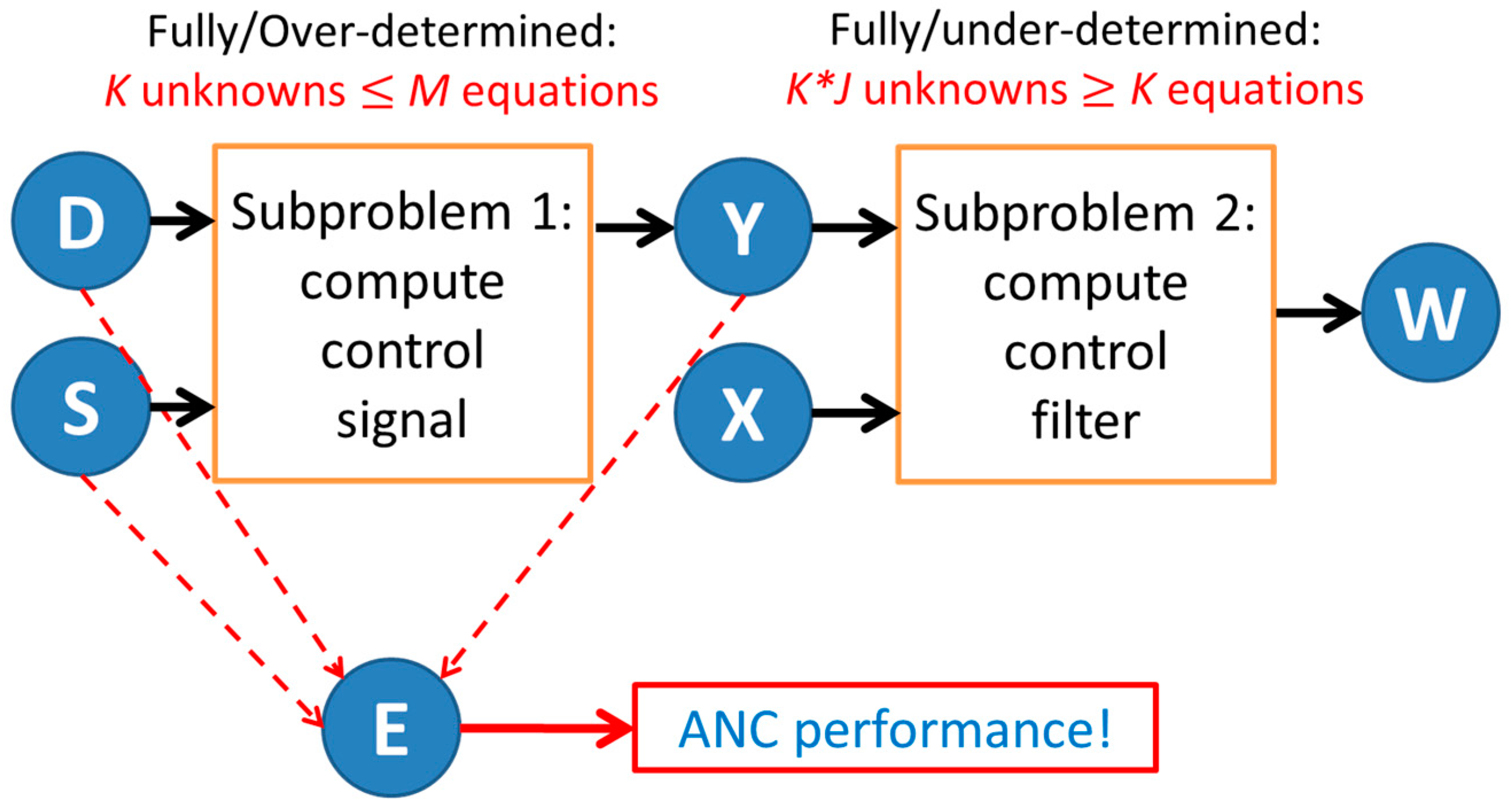
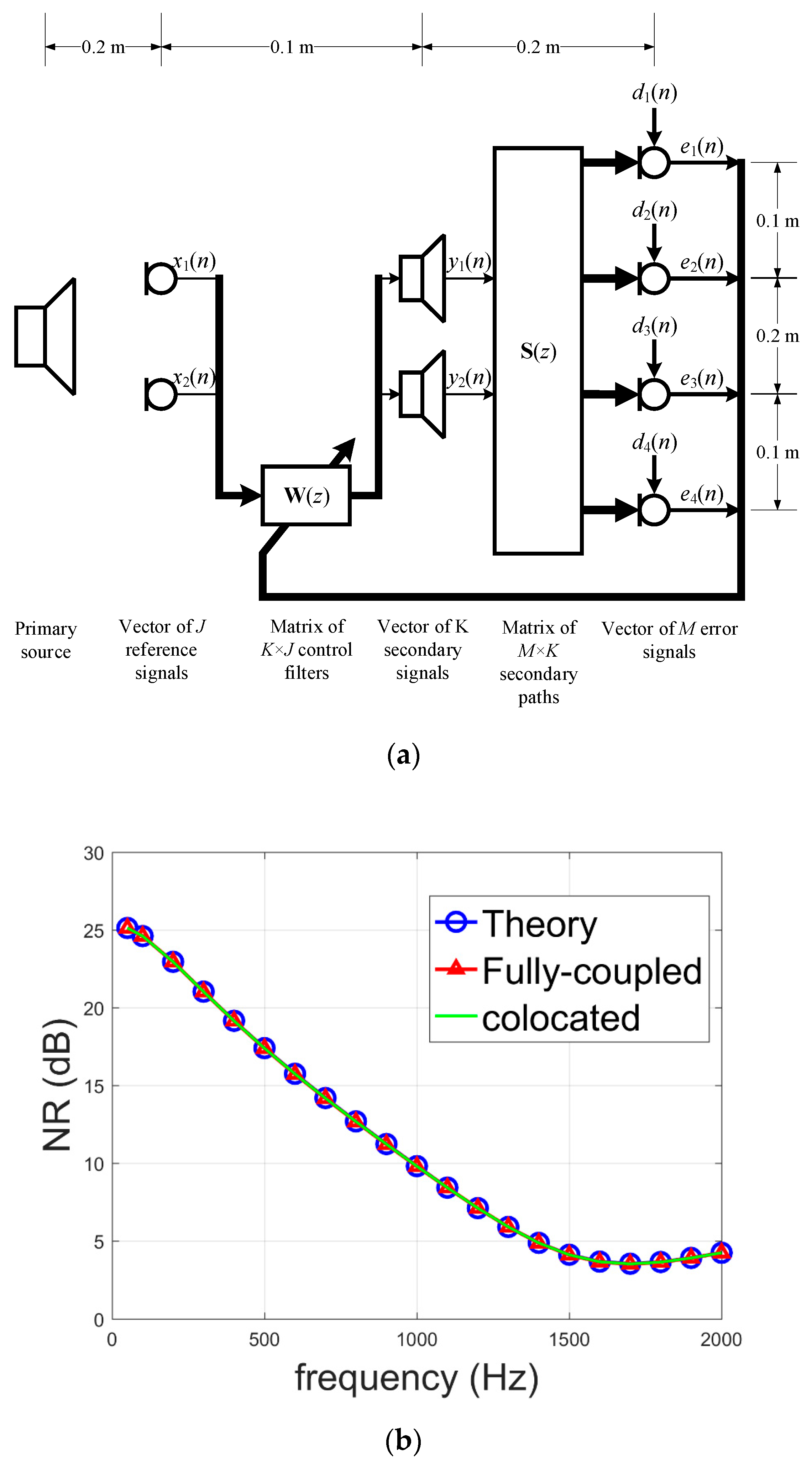
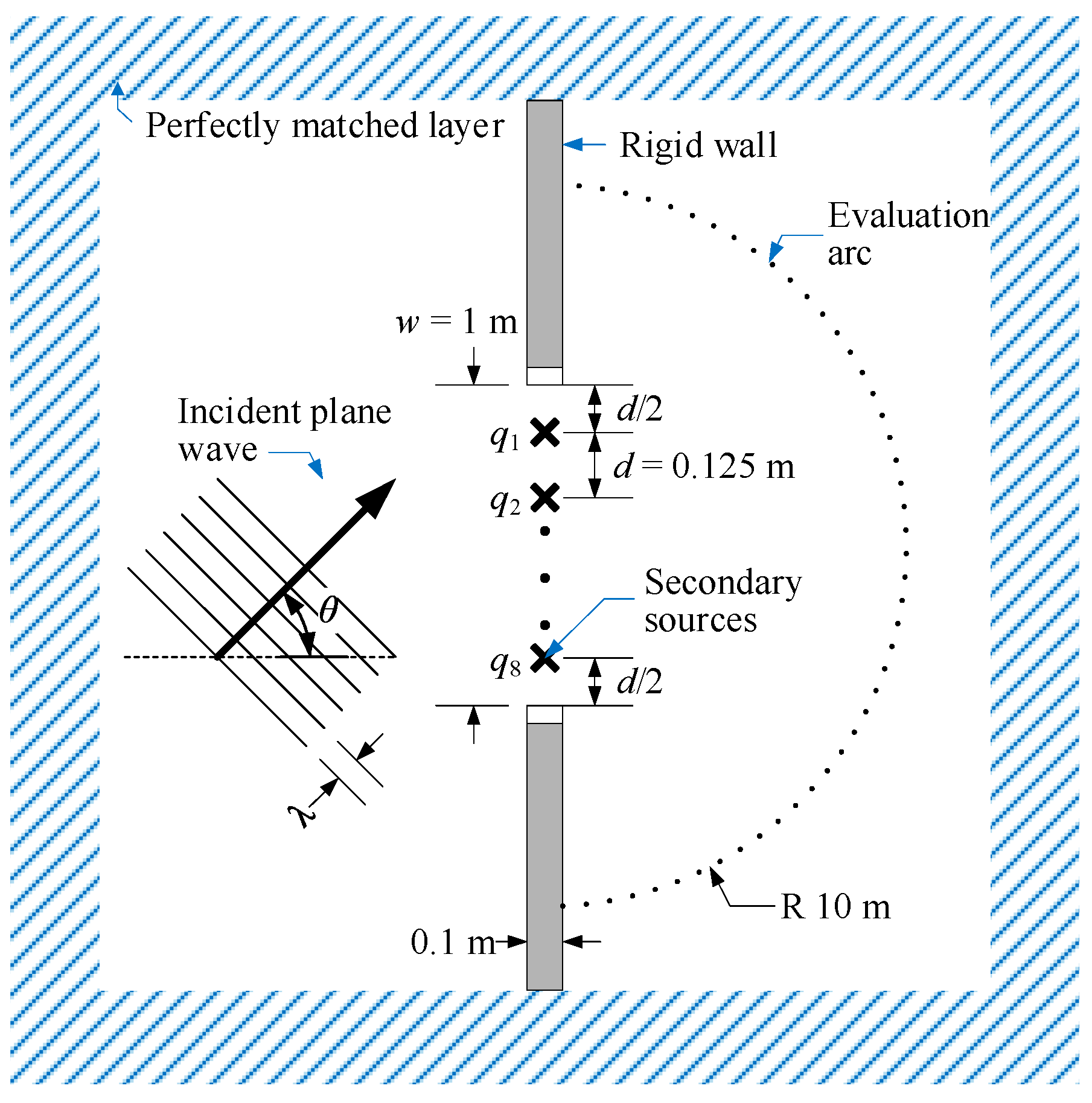
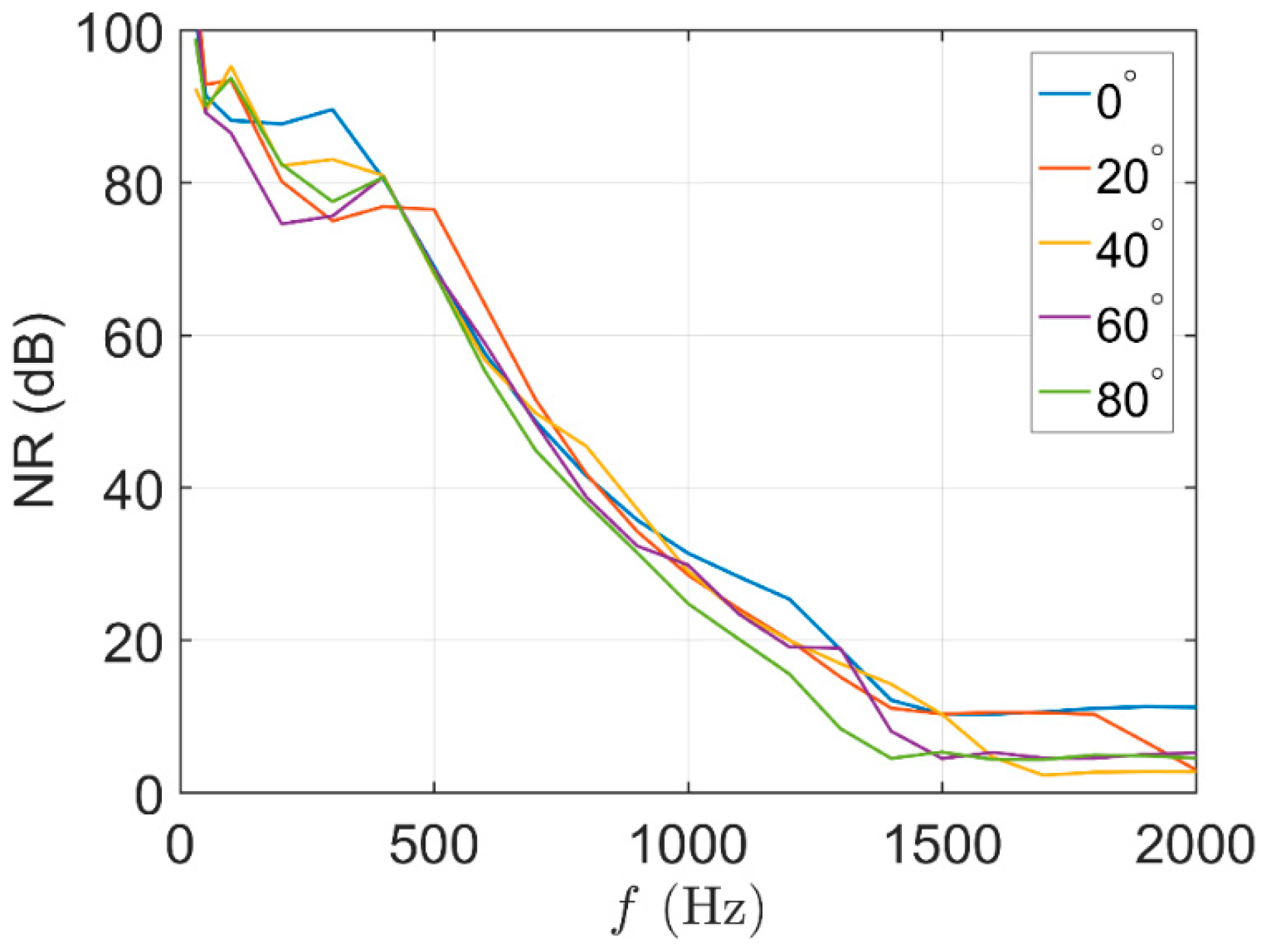


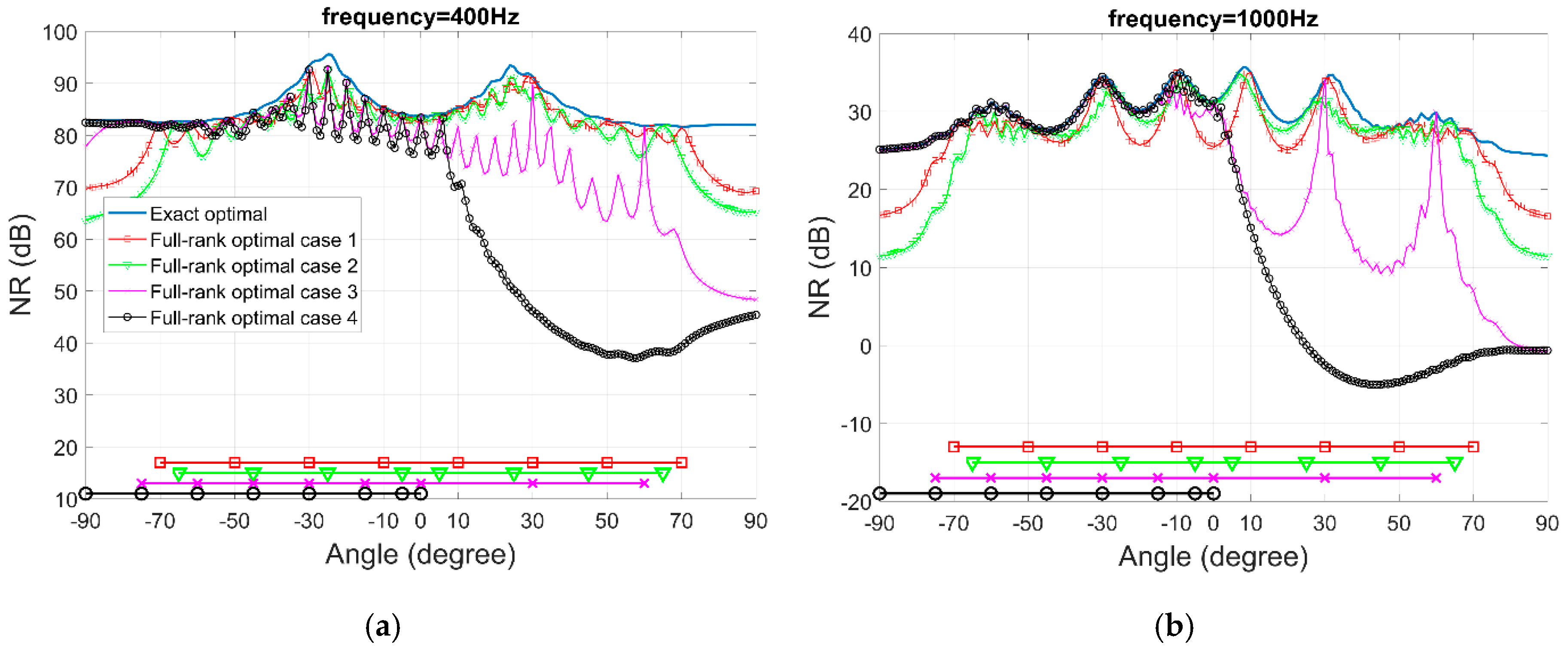

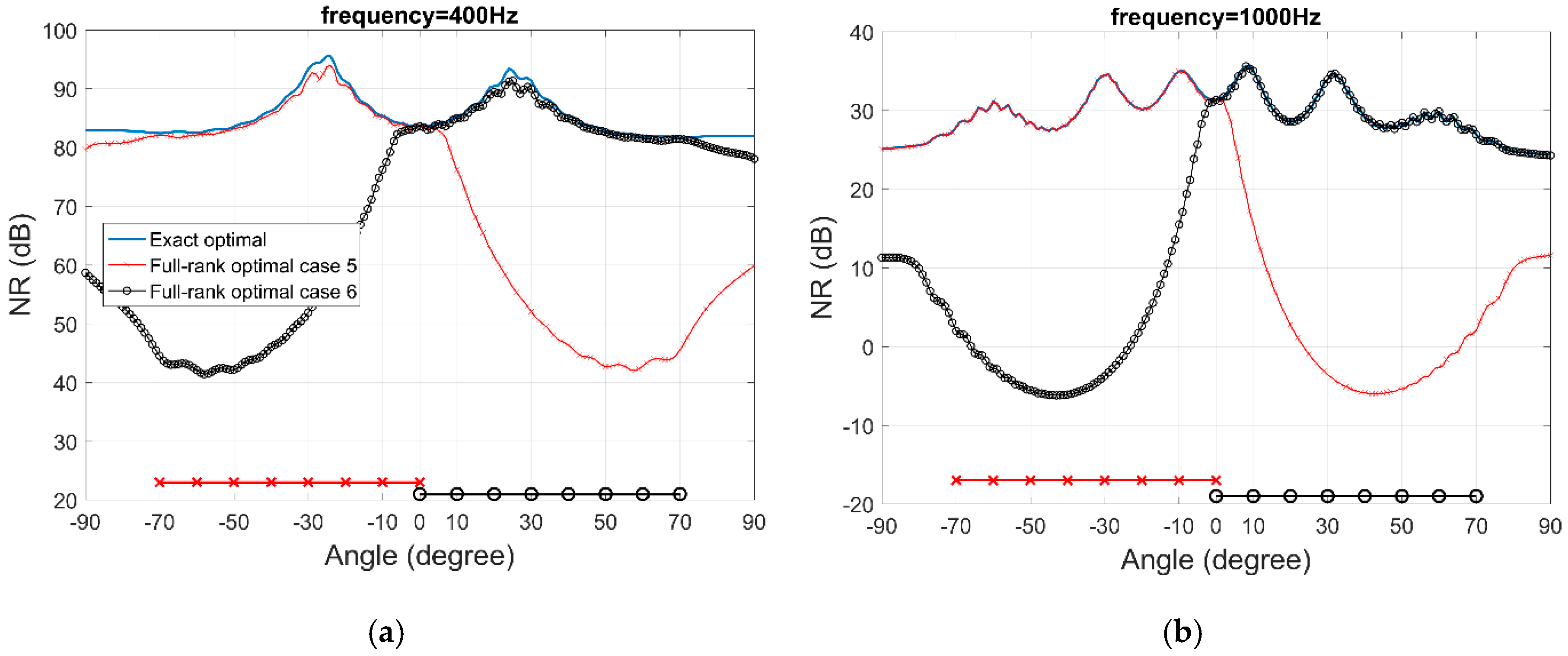

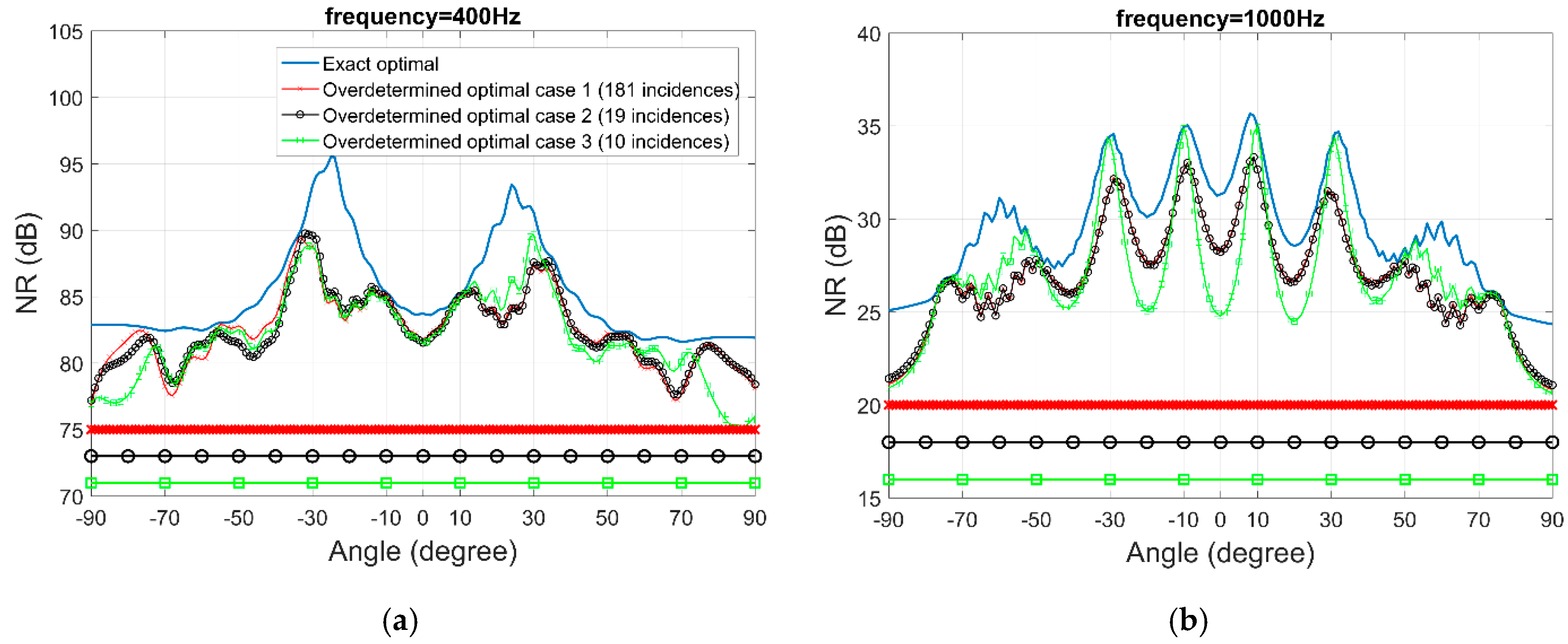
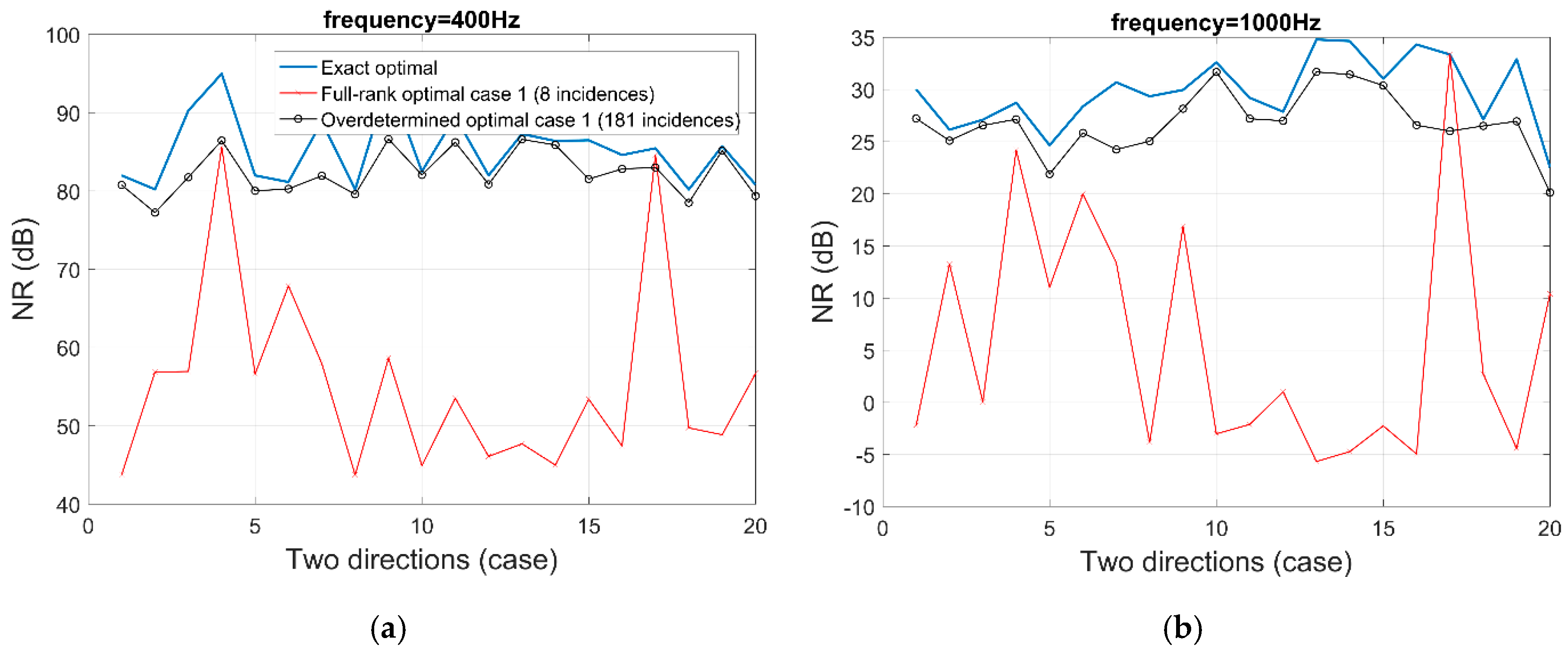
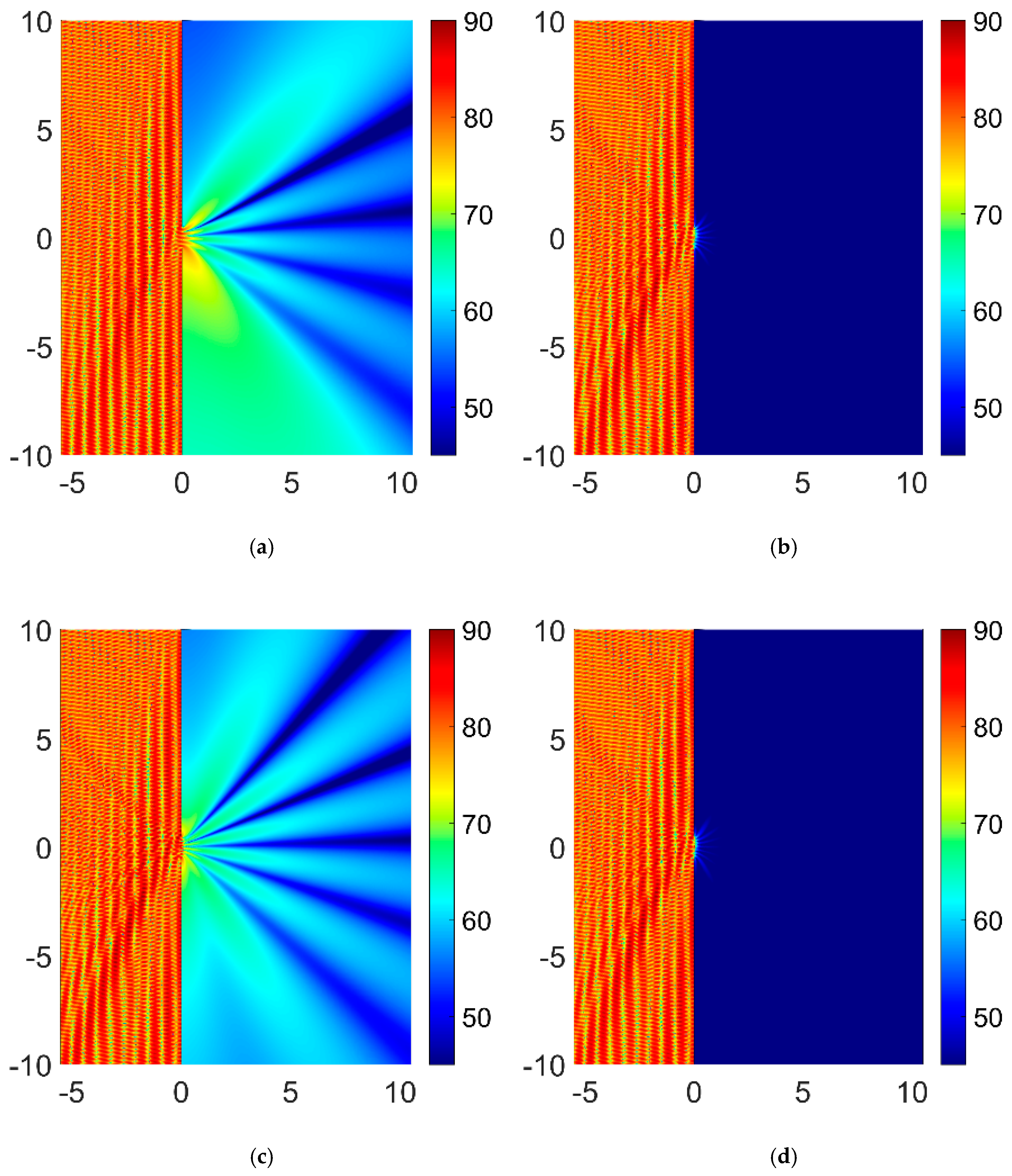
| Case/Angle. | 1 | 2 | 3 | 4 | 5 | 6 | 7 | 8 |
|---|---|---|---|---|---|---|---|---|
| #1 | −70 | −50 | −30 | −10 | 10 | 30 | 50 | 70 |
| #2 | −65 | −45 | −25 | −5 | 5 | 25 | 45 | 65 |
| #3 | −75 | −60 | −45 | −30 | −15 | 0 | 30 | 60 |
| #4 | −90 | −75 | −60 | −45 | −30 | −15 | −5 | 0 |
| #5 | −70 | −60 | −50 | −40 | −30 | −20 | −10 | 0 |
| #6 | 70 | 60 | 50 | 40 | 30 | 20 | 10 | 0 |
© 2019 by the authors. Licensee MDPI, Basel, Switzerland. This article is an open access article distributed under the terms and conditions of the Creative Commons Attribution (CC BY) license (http://creativecommons.org/licenses/by/4.0/).
Share and Cite
He, J.; Lam, B.; Shi, D.; Gan, W.S. Exploiting the Underdetermined System in Multichannel Active Noise Control for Open Windows. Appl. Sci. 2019, 9, 390. https://doi.org/10.3390/app9030390
He J, Lam B, Shi D, Gan WS. Exploiting the Underdetermined System in Multichannel Active Noise Control for Open Windows. Applied Sciences. 2019; 9(3):390. https://doi.org/10.3390/app9030390
Chicago/Turabian StyleHe, Jianjun, Bhan Lam, Dongyuan Shi, and Woon Seng Gan. 2019. "Exploiting the Underdetermined System in Multichannel Active Noise Control for Open Windows" Applied Sciences 9, no. 3: 390. https://doi.org/10.3390/app9030390






